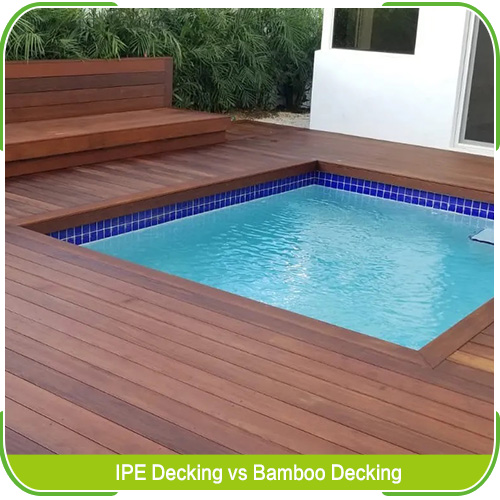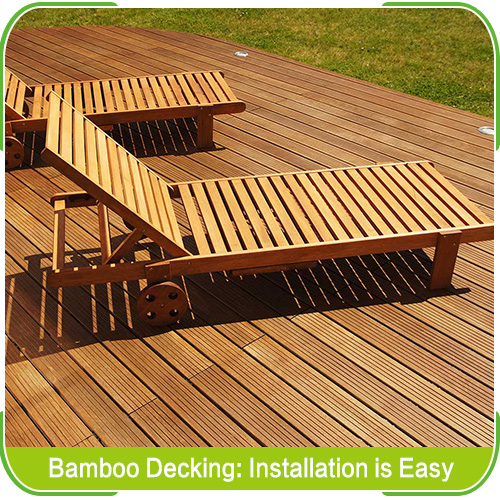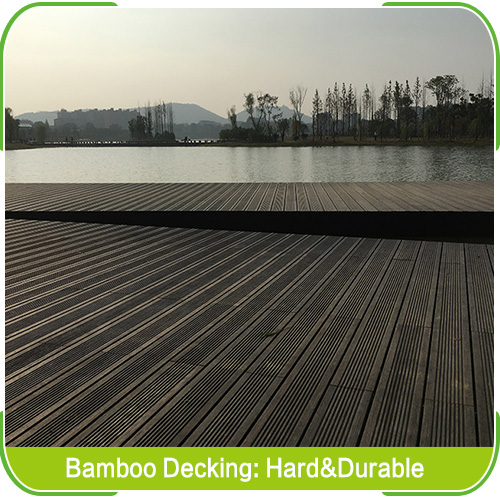Ipe Decking vs Bamboo Decking
Dec 3, 2025, 9:20 AM
Ipe wood is most durable and tough hardwood in the world and bamboo decking is brand new product with eco-friendly characteristic. Quality and cost are major difference between ipe decking and bamboo decking.
Ipe density is 0.80-1.16 kg /m3. It is very tough and heavy, but with nice fiber and beautiful grain. Ipe is harvested from south of America, like Brazil. Ipe has very good durability, anti-erosion and anti-ants. Ipe decking is used in gardens, park, swimming pool area. Ipe wood is the finest quality of hardwood, and its natural properties make it the toughest and longest lasting decking material.

Ipe decking is not suitable for standard finishing because of its own density and characteristic, and ipe decking is always oiled by wood wax oil. Wood wax oil is very good for outside and it goes into ipe decking with a long time, not floating on surface, but going inside of decking.
It is an exotic hardwood that is extremely dense and tight grained, which gives it its strength. The natural oils give it the highest rating for resistance against insects, especially termites. It is also naturally resistant to rot and decay, like mold and fungus. It holds up under extreme traffic and heavy use, and resists scratches and slivers. It has a natural rich color of brown with some pieces displaying red and amber hues. Nothing keeps its integrity or lasts as long as Ipe decking. It has been known to last up to 100+ years without preservatives. Not only will your Ipe deck easily stand up to harsh climates, it will do so with minimal maintenance.
An alternate choice for decking is Bamboo. Bamboo is a fast-growing grass with a tree-like form and woody stems. If it is younger than five years old, Bamboo is just not strong enough to make a long-lasting product. Letting it mature would improve the overall health and quality of the bamboo, but not companies profits. Although bamboo has a natural visual appeal, it is still an engineered and manufactured product.

bamboo decking is made of strand woven bamboo materials which are cut, bleached, carbonized, and dried for preservation. This is done to exterminate and remove sugars as well as insects. Then there is a process of gluing the grass strips and assembling them under high pressure, up to 1,200 tons PSI. It is then put in a mold and baked to make it a solid piece. The bamboo is then milled using a laser guided machine before its curing phase. It has a lifespan of around 10 years with decent resistance to damage by insects. While it is a semi-stable product, Bamboo is often noisy because it is a hard surface that reflects sound, rather than absorbing it.
Bamboo decking also uses formaldehyde glue to bond the strands and is processed in China. These toxic adhesives are known to outgas and have the potential to post a danger to a person's health. By gluing the Bamboo, it is more prone to peeling and curling. It has also been known to absorb sunlight, so it might not be a practical choice for decking. In addition to its outdoor characteristics, it should be kept dry and avoid water to avoid swelling and twisting - which, when you think about it, is impossible because of humidity, let alone rain.

It depends on several factors to choose the right hardwood for decking. Depending on the quality you prefer, Ipe decking is a proven choice and a great value in premium outdoor decking. Ipe has better quality than bamboo, and bamboo has better price than ipe.


 皖公网安备 34180202000049号
皖公网安备 34180202000049号